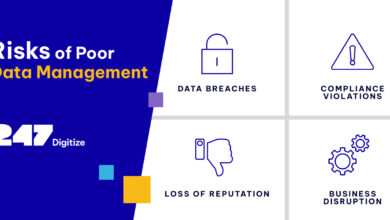
Fuel pump stations POS terminals are vulnerable to cyber attacks, says Visa
Fuel pump stations pos terminals are vulnerable to cyber attacks says visa – Fuel pump stations POS terminals are vulnerable to cyber attacks, says Visa. That’s a pretty scary headline, right? We all rely on gas stations, and the thought of our payment information being compromised while filling up is unsettling. Visa’s recent security alert highlights critical vulnerabilities in these systems, leaving both consumers and businesses at risk. This isn’t just about stolen credit card numbers; it’s about the potential for larger-scale data breaches and the serious consequences that follow.
Let’s dive into the details and explore what this means for everyone involved.
This vulnerability affects more than just the convenience of paying for gas; it exposes sensitive personal and financial data. Think about it – your name, address, credit card information, and even your driving habits (through loyalty programs) could be at risk. For businesses, the consequences are even more severe, potentially leading to hefty fines, legal battles, and a significant hit to their reputation.
We’ll look at real-world examples of past attacks, the methods used by cybercriminals, and what steps can be taken to mitigate these risks.
Visa’s Security Alert
Visa recently issued a security alert highlighting vulnerabilities in point-of-sale (POS) systems at fuel pump stations. These vulnerabilities, if exploited, could lead to significant data breaches impacting both consumers and businesses. The alert underscores the critical need for enhanced security measures within the fuel industry’s payment infrastructure.Visa’s alert didn’t specify exact vulnerabilities in a publicly released document, focusing instead on the potential for attackers to compromise systems.
However, based on past attacks and common vulnerabilities in similar systems, we can infer likely weaknesses. These could include outdated software with known exploits, weak or default passwords, inadequate network segmentation, and a lack of robust security monitoring and incident response capabilities. The consequences of such vulnerabilities are severe.
Potential Impacts on Consumers and Businesses
Compromised POS systems at gas stations could result in the theft of sensitive consumer data, including credit card numbers, expiration dates, CVV codes, and potentially even personal information like addresses and driver’s license numbers. This data could be used for identity theft, fraudulent purchases, and other criminal activities. For businesses, the impact extends beyond financial losses from fraudulent transactions.
They face reputational damage, legal liabilities, potential fines from regulatory bodies like the PCI Security Standards Council, and the costs associated with remediation, investigation, and customer notification. The loss of customer trust can be particularly damaging, impacting future sales and profitability.
Examples of Past Cyberattacks Targeting Similar Systems
The 2017 Equifax data breach, while not directly targeting gas stations, demonstrated the devastating consequences of vulnerabilities in similar systems. Equifax’s failure to patch a known vulnerability in their systems resulted in the exposure of the personal information of over 147 million people. Similarly, numerous smaller-scale attacks have targeted retail POS systems, including those at convenience stores often co-located with gas stations, highlighting the persistent threat landscape.
These attacks often involve malware injected into the POS system, enabling attackers to capture payment card data. The methods used vary, but often involve exploiting software vulnerabilities, phishing attacks, or compromised credentials.
Best Practices for Securing POS Systems in the Fuel Industry, Fuel pump stations pos terminals are vulnerable to cyber attacks says visa
Strengthening security requires a multi-layered approach. Regular software updates and patching are paramount to address known vulnerabilities. Implementing strong password policies and multi-factor authentication can significantly reduce the risk of unauthorized access. Regular security audits and penetration testing can identify and address weaknesses before they can be exploited. Network segmentation can limit the impact of a breach by isolating vulnerable systems.
Robust security monitoring and intrusion detection systems are crucial for detecting and responding to suspicious activity. Finally, employee training on security best practices is essential to prevent human error from becoming a point of vulnerability. Investing in EMV-compliant payment terminals and adhering to PCI DSS standards are also vital steps.
Attack Vectors and Methods

Fuel pump POS terminals, while seemingly isolated, represent a lucrative target for cybercriminals. Their vulnerability stems from a combination of factors: often outdated security software, infrequent updates, and physical accessibility. Understanding the attack vectors and methods used to compromise these systems is crucial for implementing effective security measures.The techniques employed by attackers are diverse and constantly evolving, requiring a multifaceted approach to security.
These attacks range from sophisticated malware infections to simple physical manipulation. This necessitates a layered security strategy that addresses both physical and digital vulnerabilities.
Common Attack Vectors
Attackers utilize several pathways to breach fuel pump POS systems. These include direct physical access, network vulnerabilities, and exploiting weaknesses in software or hardware. Direct physical access allows for the installation of skimming devices or malware, while network vulnerabilities can be exploited remotely to gain control of the system. Software vulnerabilities, such as unpatched operating systems, provide another entry point for malicious code.
Malware Infections
Malware, in various forms, plays a significant role in compromising POS systems. This can range from RAM scrapers that capture transaction data in real-time to more persistent malware that installs itself on the system and continuously steals data. Often, malware is delivered through infected USB drives left near the terminal or via compromised software updates. A sophisticated variant might even encrypt the system’s data, demanding a ransom for its release.
Phishing and Social Engineering
While less common directly targeting fuel pump attendants, phishing attacks can still indirectly affect these systems. If an employee’s credentials are compromised through a phishing email, attackers might gain access to the network and subsequently target the POS terminals. This highlights the importance of robust employee security awareness training.
Skimming and Physical Tampering
Skimming involves attaching a device to the card reader that captures card data. This can be done discreetly, often without the user’s knowledge. Physical tampering can also involve replacing the entire card reader with a compromised device. These attacks are typically perpetrated during off-hours or by individuals with inside knowledge.
Hypothetical Attack Scenario
Imagine a scenario where a cybercriminal gains physical access to a fuel station at night. They install a skimming device onto a POS terminal’s card reader. Over several days, the device silently captures card numbers, expiration dates, and CVV codes from unsuspecting customers. The attacker then retrieves the device, extracting the stolen data and selling it on the dark web.
The consequences include significant financial losses for customers, reputational damage for the fuel station, and potential legal repercussions for the business.
Comparison of Attack Methods
| Attack Method | Effectiveness | Mitigation Strategies | Example |
|---|---|---|---|
| Malware Infection | High, especially with sophisticated malware | Regular software updates, strong antivirus software, network segmentation | RAM scraper stealing transaction data in real-time |
| Phishing | Moderate, relies on employee susceptibility | Security awareness training, multi-factor authentication, email filtering | Employee clicks malicious link, granting attacker network access |
| Skimming | High, relatively easy to implement | Regular physical inspections, tamper-evident seals, EMV chip card readers | Device attached to card reader captures card data |
| Physical Tampering | High, requires physical access | Secure enclosures, surveillance cameras, alarm systems | Entire card reader replaced with a compromised device |
Consequences of Successful Attacks

The vulnerability of POS terminals at fuel pump stations to cyberattacks, as highlighted by Visa’s security alert, presents significant risks extending far beyond simple data theft. A successful attack can trigger a cascade of negative consequences, impacting businesses financially, legally, and reputationally, while severely eroding consumer trust. Let’s delve into the specific ramifications.
The financial fallout from a data breach at a fuel station can be staggering. Direct costs include the expenses associated with investigating the breach, notifying affected customers, credit monitoring services offered to victims, and legal fees. Indirect costs are even more substantial and can include lost revenue due to business disruption, decreased customer loyalty, and the potential for fines and settlements resulting from legal action.
The cost of remediation, including upgrading security systems and implementing improved data protection measures, adds another layer to the financial burden. For example, the 2017 Equifax breach, while not specifically at fuel stations, cost the company billions in fines, legal fees, and remediation efforts, demonstrating the potential scale of financial losses.
Financial Losses from Data Breaches
Financial losses resulting from data breaches at fuel pump stations are multifaceted. Direct costs encompass immediate expenses like incident response, customer notification, and credit monitoring. Indirect costs, however, are often more substantial and long-lasting, impacting revenue streams and future profitability. These can include the loss of customers due to damaged trust, increased insurance premiums, and the cost of rebuilding a tarnished reputation.
The magnitude of these losses is directly proportional to the scale of the breach and the sensitivity of the compromised data. For instance, a breach exposing credit card numbers and personal identification information will result in significantly higher costs than a breach involving only transaction details.
Reputational Damage Following Cyberattacks
The reputational damage following a successful cyberattack on a fuel pump station can be devastating and long-lasting. Negative publicity, fueled by media coverage and social media discussions, can severely impact public perception of the business. Customers may lose trust and choose to patronize competitors, leading to a decline in sales and market share. The reputational damage extends beyond immediate customer losses, impacting future business opportunities and potentially affecting the company’s ability to attract investors and partners.
The impact is amplified if the business is perceived as having been negligent in its security practices, further eroding consumer confidence.
Legal and Regulatory Implications of Data Breaches
Businesses failing to adequately protect customer data face significant legal and regulatory consequences. Depending on the jurisdiction, they may be subject to hefty fines and penalties under data privacy laws like GDPR (in Europe) or CCPA (in California). Class-action lawsuits from affected customers are also a common outcome, adding to the financial burden. Regulatory bodies like the FTC (Federal Trade Commission) in the US can impose sanctions, impacting the business’s ability to operate.
Non-compliance can also lead to reputational damage, further compounding the negative effects. Failure to meet regulatory standards can result in significant legal battles and financial penalties, ultimately harming the company’s long-term sustainability.
Impact on Consumer Trust and Confidence
Data breaches at fuel pump stations severely erode consumer trust and confidence. Customers who have experienced a data breach are more likely to switch to competitors, fearing further compromise of their personal information. This loss of trust can be difficult to regain, even with significant efforts to improve security measures. The negative publicity surrounding a breach can also discourage potential new customers, impacting the business’s growth and profitability.
The long-term effects on consumer behavior can be substantial, requiring sustained efforts to rebuild trust and reassure customers about the safety of their data.
Mitigation and Security Measures
Protecting fuel pump POS terminals from cyberattacks requires a multi-layered approach encompassing hardware, software, and employee training. Ignoring these vulnerabilities can lead to significant financial losses, reputational damage, and legal repercussions. The following steps Artikel practical strategies to enhance security.
Implementing robust security measures is crucial for fuel pump stations to safeguard their POS systems and customer data. This involves a combination of technological solutions and employee training programs to mitigate the risks of cyberattacks.
Practical Steps to Improve POS Terminal Security
Businesses can significantly reduce their vulnerability to cyberattacks by implementing a range of security measures. These measures should be regularly reviewed and updated to keep pace with evolving threats.
- Regular Software Updates: Keeping POS software and operating systems up-to-date patches critical security vulnerabilities exploited by attackers. Failing to do so leaves systems exposed to known exploits.
- Strong Password Policies: Enforce strong, unique passwords for all POS system users. Regular password changes and multi-factor authentication (MFA) add an extra layer of protection.
- Firewall Implementation: A robust firewall acts as a barrier, blocking unauthorized access to the POS network. This prevents malicious traffic from reaching the terminals.
- Intrusion Detection Systems (IDS): IDS monitors network traffic for suspicious activity, alerting administrators to potential threats. This allows for prompt intervention to prevent successful attacks.
- Regular Security Audits: Conducting regular security audits identifies vulnerabilities and weaknesses in the system. This proactive approach allows for timely remediation of potential problems.
- Point-to-Point Encryption: Secure communication between the POS terminal and the payment processor using end-to-end encryption. This protects sensitive cardholder data during transmission.
- Data Loss Prevention (DLP) Tools: DLP tools monitor data movement and prevent sensitive information from leaving the network without authorization.
Security Measures Checklist for Fuel Pump Station Owners
This checklist provides a structured approach to implementing key security measures. Regularly reviewing and updating this checklist is vital for maintaining a strong security posture.
- Install and maintain a firewall.
- Implement strong password policies and multi-factor authentication.
- Conduct regular software updates for all POS systems and related hardware.
- Enable encryption for all data transmissions.
- Perform regular security audits and penetration testing.
- Establish a robust incident response plan.
- Train employees on security best practices.
- Regularly review and update security policies.
- Employ physical security measures to protect POS terminals from unauthorized access.
- Use anti-malware and anti-virus software.
Security Awareness Training Program for Employees
A comprehensive training program is essential to ensure employees understand and follow security protocols. Regular refresher courses are necessary to maintain awareness of evolving threats.
The program should cover topics such as recognizing phishing attempts, protecting passwords, handling suspicious emails, reporting security incidents, and understanding the importance of physical security measures. Role-playing scenarios and simulated attacks can enhance the effectiveness of the training.
Comparison of Security Technologies for POS Systems
Different security technologies offer varying levels of protection. The choice of technology depends on factors such as budget, the complexity of the POS system, and the level of risk.
| Technology | Description | Advantages | Disadvantages |
|---|---|---|---|
| Firewall | Controls network traffic | Cost-effective, relatively easy to implement | Can be bypassed by sophisticated attackers |
| Intrusion Detection System (IDS) | Monitors network traffic for malicious activity | Detects and alerts to potential attacks | Can generate false positives, requires expertise to manage |
| Intrusion Prevention System (IPS) | Monitors and blocks malicious activity | Proactive defense against attacks | Can be complex to configure and manage |
| Endpoint Detection and Response (EDR) | Monitors individual devices for malicious activity | Provides detailed insights into attacks | Can be resource-intensive |
The Role of Payment Processors

Payment processors like Visa play a crucial role in securing transactions at fuel pump POS terminals, a sector increasingly vulnerable to cyberattacks. Their involvement extends beyond simply processing payments; they are key players in establishing and maintaining a secure payment ecosystem. Understanding their responsibilities is critical to mitigating the risks associated with these vulnerable points of sale.Payment processors have a multifaceted responsibility in ensuring the security of transactions at fuel pump POS terminals.
This includes developing and enforcing robust security standards for their network, implementing advanced fraud detection systems, and providing merchants with the tools and resources to enhance their own security posture. Their role is proactive, aiming to prevent attacks before they occur, and reactive, providing support and investigation in the event of a breach. This extends to working closely with financial institutions and law enforcement to track and address fraudulent activity.
Payment Processor Security Standards and Enforcement
Payment processors establish and maintain comprehensive security standards that merchants must adhere to in order to remain on their network. These standards often cover aspects such as data encryption, secure software updates, and regular security audits. Non-compliance can result in penalties or even removal from the payment network. Visa, for example, has a comprehensive set of security requirements for merchants, including those operating fuel pumps, focusing on PCI DSS compliance and regular vulnerability assessments.
Failure to meet these standards leaves the merchant, and ultimately the processor, exposed to increased risk. The processor’s role in enforcing these standards is critical in maintaining the overall security of the payment ecosystem.
Fraud Detection and Prevention Mechanisms
Payment processors leverage sophisticated technology to detect and prevent fraudulent transactions. This includes real-time monitoring of transactions for suspicious patterns, utilizing machine learning algorithms to identify anomalies, and employing advanced analytics to assess risk levels. For instance, a sudden surge in transactions from a single fuel pump, or unusually large transactions, might trigger an alert, prompting investigation and potential blocking of further transactions.
This proactive approach helps to minimize losses and prevent widespread fraud. The effectiveness of these mechanisms is constantly being improved through continuous monitoring and adaptation to evolving threat landscapes.
Risk Mitigation Tools and Resources for Businesses
Payment processors offer a range of tools and resources to help businesses mitigate risks associated with fuel pump POS terminals. This might include providing secure payment hardware, offering security training programs for staff, and providing access to vulnerability scanning services. Furthermore, many processors offer incident response plans and support to help businesses recover from security breaches. This proactive support reduces the burden on businesses, enabling them to focus on their core operations while relying on the expertise of the payment processor to handle complex security issues.
Access to these resources is crucial for businesses, especially smaller ones, that may lack the internal resources to manage these security aspects effectively.
Improved Communication and Collaboration
Effective communication and collaboration between payment processors and businesses are crucial for strengthening security. Regular updates on emerging threats, best practices, and security advisories are essential. Open communication channels allow for the rapid dissemination of information, enabling businesses to react swiftly to potential vulnerabilities. For example, if a new type of malware targeting fuel pump POS terminals is identified, the payment processor can immediately alert its merchants, enabling them to take preventative measures.
This collaborative approach is far more effective than relying solely on individual businesses to identify and address threats.
Future Trends and Predictions
The cybersecurity landscape for fuel pump station POS terminals is constantly evolving, with new threats emerging alongside innovative security solutions. Predicting the future requires understanding current vulnerabilities and the trajectory of technological advancements within the industry. The interconnected nature of modern systems, coupled with the increasing sophistication of cybercriminals, paints a complex picture of both risk and opportunity.The future of cybersecurity in the fuel industry will likely be defined by a proactive, multi-layered approach, shifting from reactive damage control to preventative measures.
This will necessitate a collaborative effort between fuel retailers, payment processors, technology providers, and regulatory bodies. The successful implementation of robust security protocols will be crucial not only for protecting financial data but also for maintaining operational integrity and customer trust.
Emerging Threats to Fuel Pump Station POS Terminals
The convergence of several technological trends is creating new attack vectors. The increasing reliance on Internet of Things (IoT) devices within fuel stations, such as smart pumps and environmental monitoring systems, expands the attack surface. These devices, often lacking robust security features, can become entry points for malware and unauthorized access. Furthermore, the rise of sophisticated AI-powered malware capable of evading traditional security measures poses a significant threat.
We can also anticipate an increase in targeted attacks leveraging zero-day vulnerabilities – flaws in software that are unknown to developers and security vendors – which can be extremely difficult to defend against. Finally, the growing use of cloud-based services for processing transactions introduces new security challenges, including data breaches and compromised APIs.
The Future Landscape of Cybersecurity in the Fuel Industry
We anticipate a significant increase in the adoption of advanced security technologies. This includes advanced threat detection systems employing machine learning and artificial intelligence to identify and respond to sophisticated attacks in real-time. Furthermore, the implementation of robust multi-factor authentication (MFA) will become increasingly critical, enhancing the security of access to POS systems and other critical infrastructure. The fuel industry will also likely see a greater emphasis on security awareness training for employees, as human error remains a significant vulnerability.
Regular security audits and penetration testing will become standard practice to proactively identify and address potential weaknesses. Finally, stronger collaboration and information sharing within the industry will be essential for rapidly responding to emerging threats and sharing best practices.
The Impact of New Technologies on Security
The Internet of Things (IoT) presents both opportunities and challenges. While IoT devices can enhance operational efficiency, they also expand the attack surface if not properly secured. Blockchain technology, on the other hand, offers the potential to enhance transaction security and transparency by creating an immutable record of transactions. This can help prevent fraud and improve accountability.
Visa’s warning about vulnerable fuel pump POS terminals really got me thinking about secure system design. Building robust, reliable systems is crucial, and that’s why I’ve been diving into the world of domino app dev, the low-code and pro-code future , exploring how these development methods can help create more secure applications. Ultimately, better security practices, regardless of the development approach, are essential to protecting vulnerable systems like those at fuel pump stations from cyberattacks.
However, the implementation of blockchain requires careful consideration of scalability and integration with existing systems. Artificial Intelligence (AI) will play a crucial role in both offensive and defensive cybersecurity. AI-powered malware will become more sophisticated, while AI-driven security systems will become more effective at detecting and responding to threats.
Potential Future Vulnerabilities and Countermeasures
The following points highlight potential future vulnerabilities and corresponding countermeasures:
- Vulnerability: Exploitation of vulnerabilities in IoT devices connected to POS systems. Countermeasure: Implementing robust security protocols for IoT devices, including regular firmware updates and strong authentication mechanisms.
- Vulnerability: AI-powered malware capable of evading traditional security software. Countermeasure: Utilizing advanced threat detection systems based on machine learning and AI.
- Vulnerability: Phishing attacks targeting employees to gain access to POS systems. Countermeasure: Implementing comprehensive security awareness training for employees and using multi-factor authentication.
- Vulnerability: Data breaches resulting from compromised cloud-based services. Countermeasure: Utilizing robust cloud security measures, including encryption and access controls.
- Vulnerability: Zero-day exploits targeting newly discovered software vulnerabilities. Countermeasure: Implementing vulnerability scanning and penetration testing, and participating in vulnerability disclosure programs.
Closing Notes
The vulnerability of fuel pump POS terminals to cyberattacks is a serious issue, impacting both consumers and businesses. Visa’s warning serves as a wake-up call, emphasizing the need for heightened security measures across the fuel industry. While the threat is real, proactive steps, like those Artikeld in this post, can significantly reduce the risk. Staying informed about emerging threats and implementing robust security protocols is crucial for protecting sensitive data and maintaining consumer trust.
It’s time for gas stations and payment processors to collaborate effectively to ensure a safer and more secure experience for everyone.
FAQ Explained: Fuel Pump Stations Pos Terminals Are Vulnerable To Cyber Attacks Says Visa
What types of malware are commonly used to attack fuel pump POS terminals?
Various malware, including RAM scrapers and POS malware designed to steal payment data, are commonly employed. These often exploit vulnerabilities in outdated software or weak network security.
How can consumers protect themselves from these attacks?
Monitor your credit and debit card statements regularly for unauthorized transactions. Consider using credit cards, which offer better fraud protection than debit cards. Be wary of suspicious activity at the pump itself.
What role does EMV chip technology play in protecting against these attacks?
EMV chip cards offer enhanced security compared to magnetic stripe cards, but they’re not foolproof. Skimming attacks can still occur, highlighting the need for comprehensive security measures beyond just the payment card itself.
Are there any government regulations specifically addressing the security of fuel pump POS terminals?
Regulations vary by region, but many jurisdictions have data breach notification laws and payment card industry (PCI DSS) standards that apply. Compliance with these regulations is crucial for businesses.





